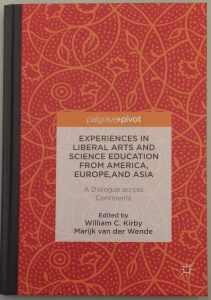
In a world of higher education increasingly consumed either with the growth of professional education, particularly in business, or with “rankings”, or “league tables” of research universities and the quest for “world-class” institutions, the global debate on liberal arts and sciences has moved from European origin and out of North American academic landscape to engage many regions and countries, including China, which seeks to gain from undergraduate education model in terms of global integration and influence.
This book highlights the experiences of international leaders in liberal arts and science education from around the world as they discuss regional trends and models with a specific focus on developments in and cooperation with China. Focusing on why this model responds to the twenty-first century requirements for excellence and relevance in undergraduate education, contributors examine if it can be implemented in different contexts and across academic cultures, structures, and traditions. They investigate how teaching and learning experiences may vary in the context of different cultures and values. A variety of international innovations, start-ups, and major international collaborations between American, European, and Asian institutions are explored in order to understand the opportunities and challenges for China in developing liberal arts and science education. The authors have reviewed and evaluated trends with the aim of making impact across whole systems of higher education, with implications also for secondary education before university and the demands of labor market after graduation.
